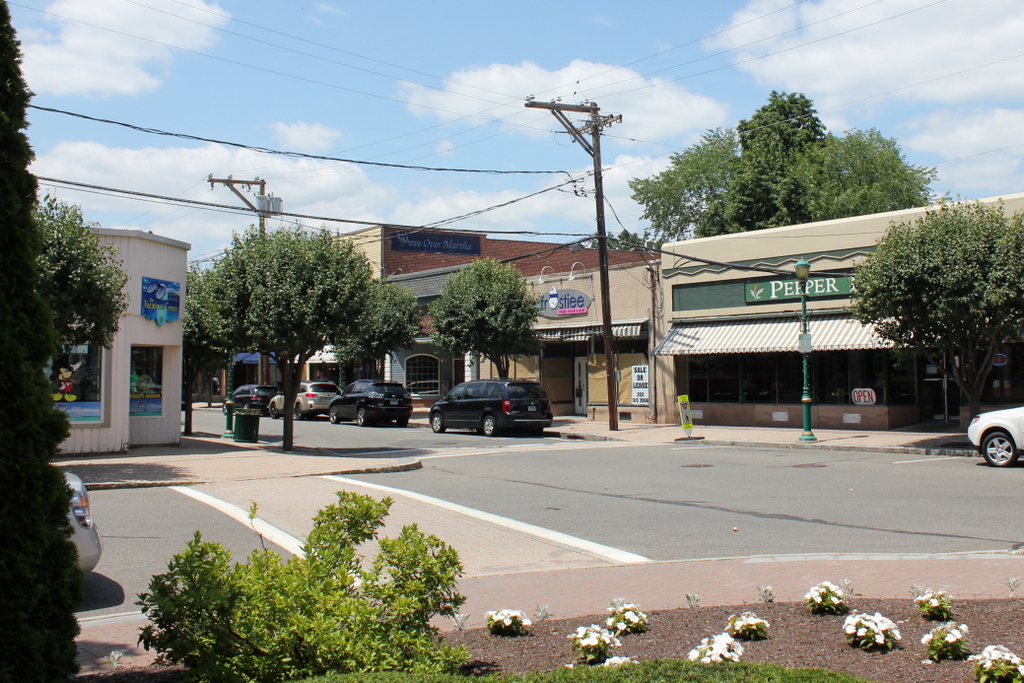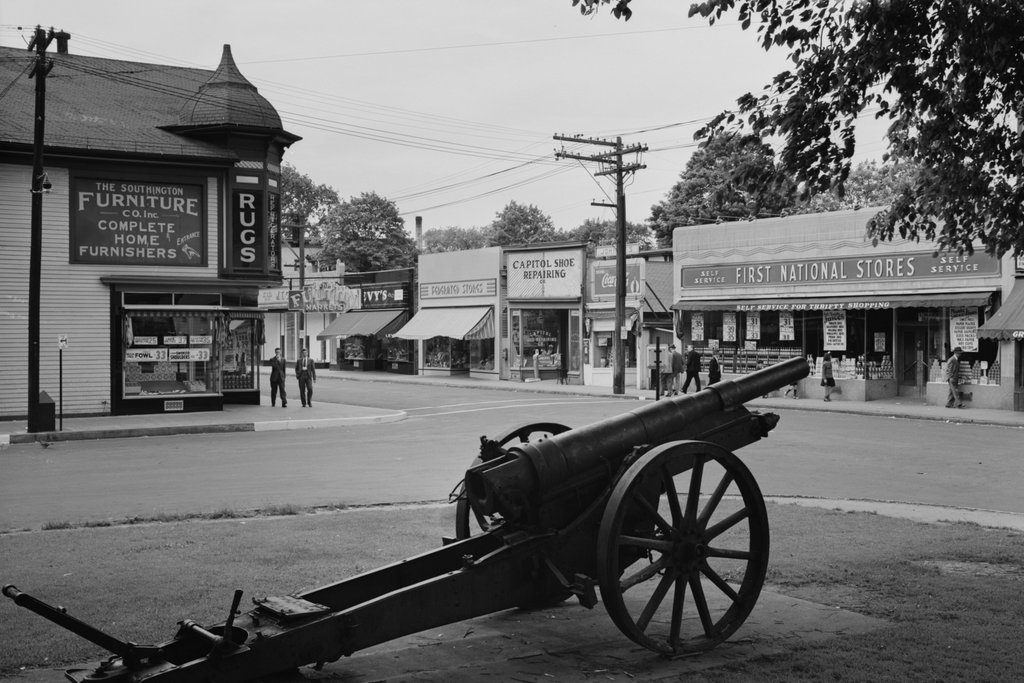Looking toward Center Street from the town green in Southington in May 1942. Image courtesy of the Library of Congress, FSA-OWI Collection.
Center Street in 2015:

Many of the buildings in the first photo are similar to the ones today, but most of them are gone. The only one left seems to be the one on the far left, which once housed the First National Stores (Finast) grocery store. In the 1942 photo, it is advertised as “Self Service” on the sign, differentiating it from other grocery stores where the customer would be served by a clerk behind the counter. Finast, by contrast, was much like a modern grocery store where customers would walk through the store with a shopping cart, picking what they want and then paying at the checkout counter. A few 1942 photos of the interior of the store can be seen here on the Library of Congress website.
On the other side of Court Street there was another grocery store, The Fulton Markets. The building was on the left of the 1942, and it has since been replaced with a modern one-story commercial building. This store evidently had slightly higher prices than Finast; signs in the windows indicate that their smoked shoulders were 33 cents per pound, as opposed to 31 cents at Finast. Likewise, “milk fed fowl” was also 33 cents at Fulton and 31 cents at Finast, although the sign in the window at Fulton indicates that they are “fancy fowl,” so perhaps the fact that the meat is “fancy” justifies the extra two cents. Other meats that were available at Fulton included “fresh ground chopped steak” for 25 cents, lamb patties for 37 cents, and “fresh made pure pork sausages” for 35 cents per pound. They also had “Kooling Soda” available, 4 for 29 cents.
Although World War II had begun less than six months earlier, Americans were already starting to see it affect their grocery shopping. Just a few weeks before the first photo was taken, sugar became the first grocery product to be rationed; each individual was limited to half a pound per week. This seems like it would be a lot of sugar, but apparently it was only half of the average consumption prior to the rationing. Before the end of the year, coffee would also be rationed, limiting each person to one pound every five weeks. By the end of 1943, rationing would be extended to many other grocery store items, including meat, cheese, butter, cooking oil, processed foods, and dried fruit.
Other businesses visible in the 1942 photo include Capitol Shoe Repairing, Federated Stores, Levy’s (a children’s clothing store), and W.T. Grant (a discount department store). Today, not only are all of the buildings gone, but most of the businesses themselves no longer exist. One possible exception, though, might be Federated Stores; Macy’s was originally founded in 1929 as Federated Department Stores, but I’m not sure if this is the same company as the one seen in the first photo. As for Finast, the grocery store company once had locations throughout the northeast, but it would later go through several mergers, eventually becoming part of Stop & Shop.

